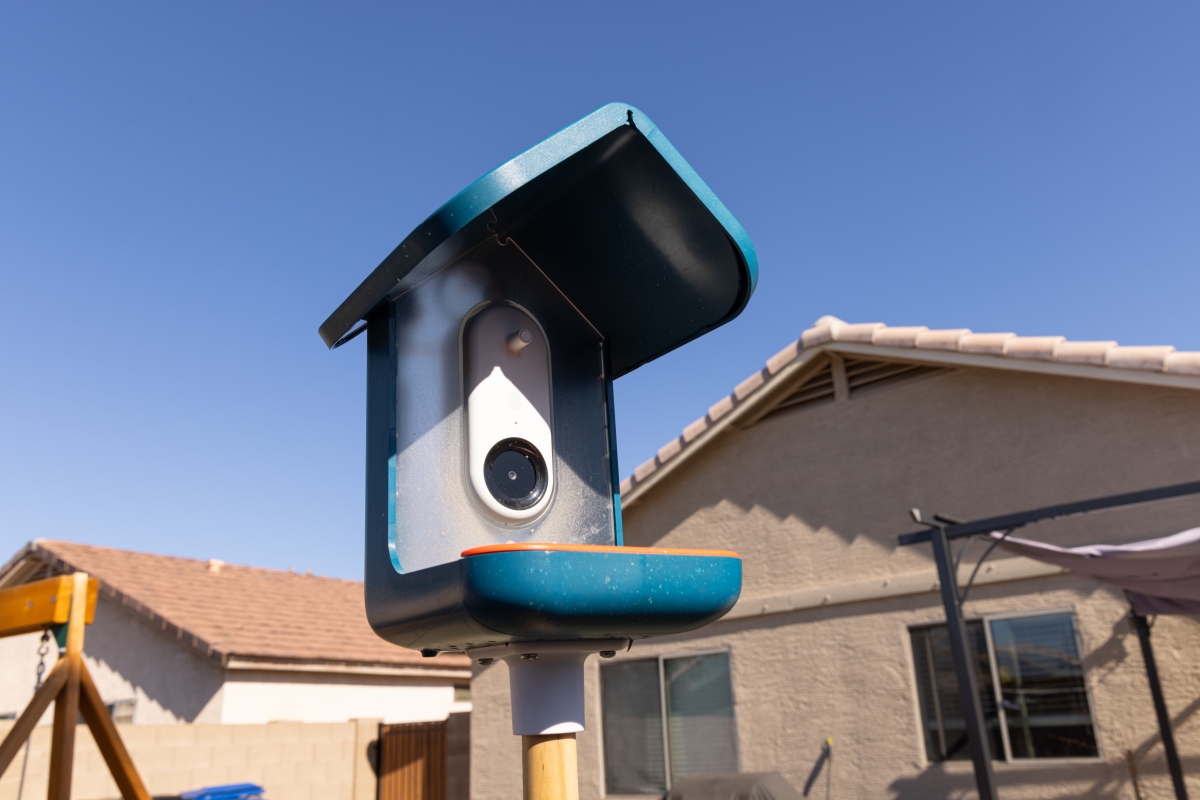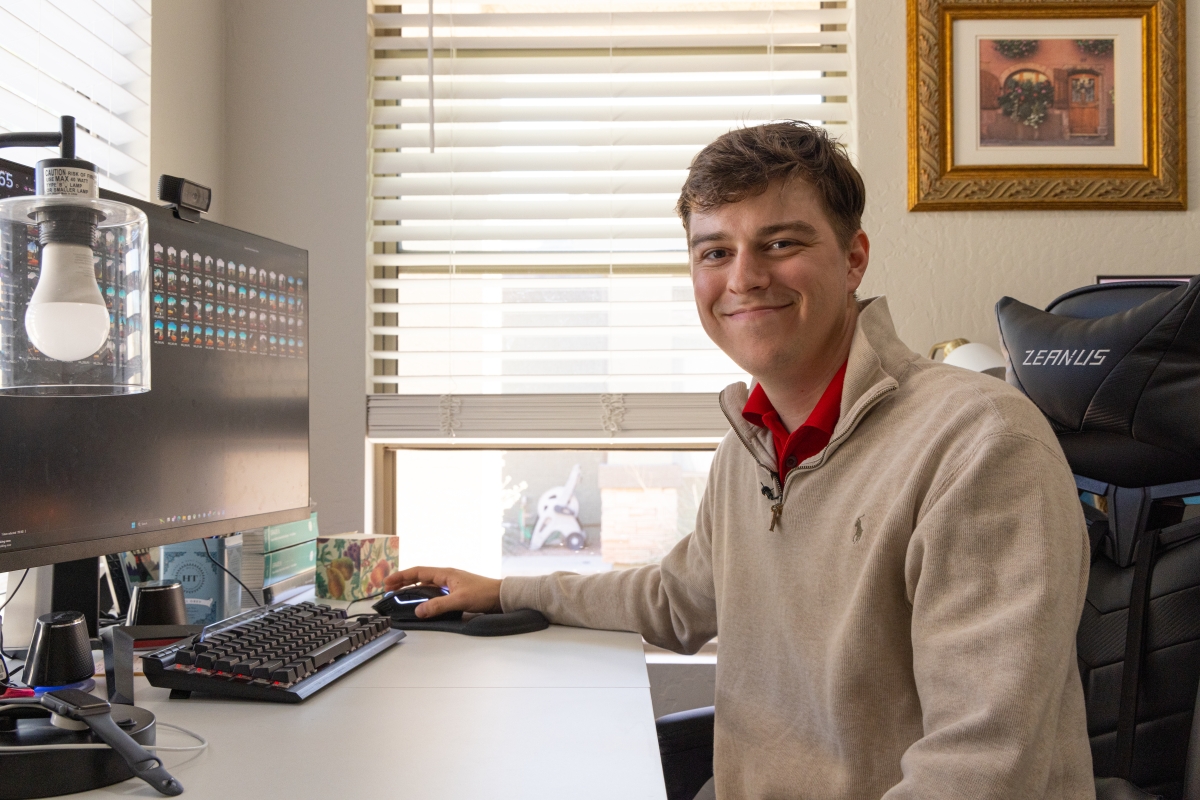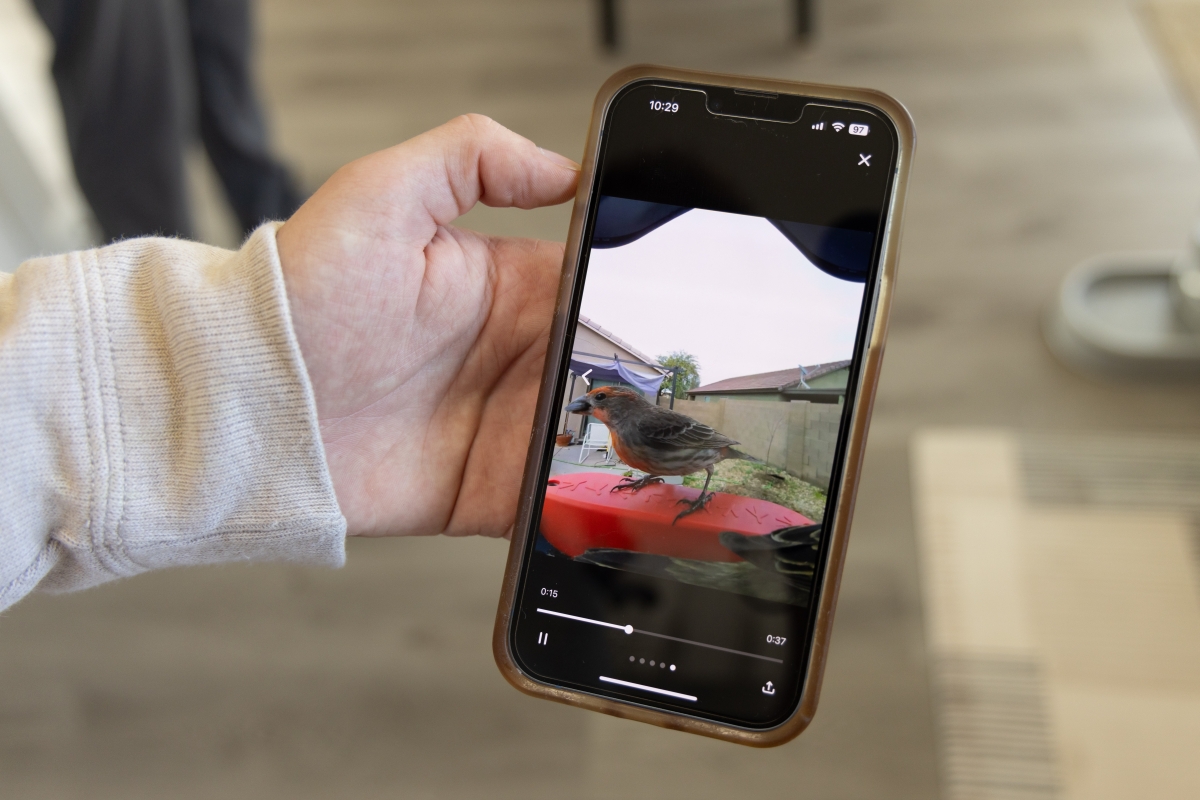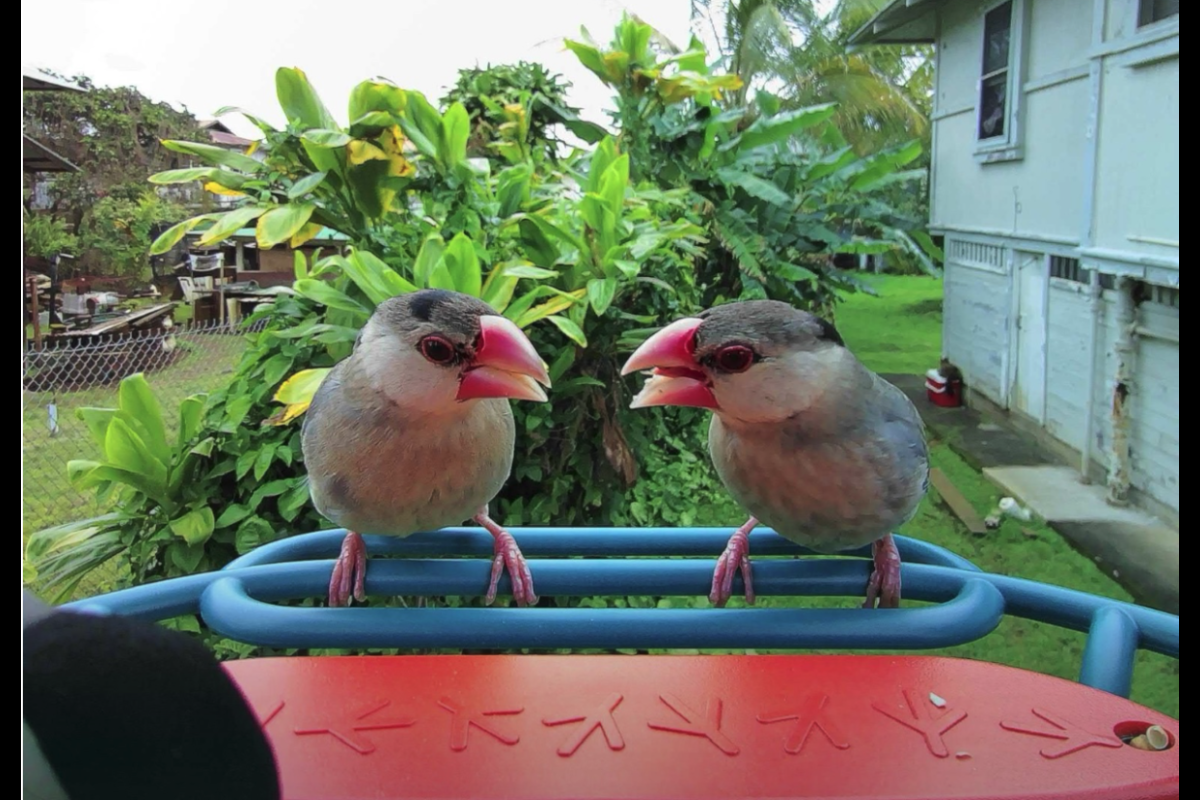AI-equipped feeders allow ASU Online students to study bird behavior remotely
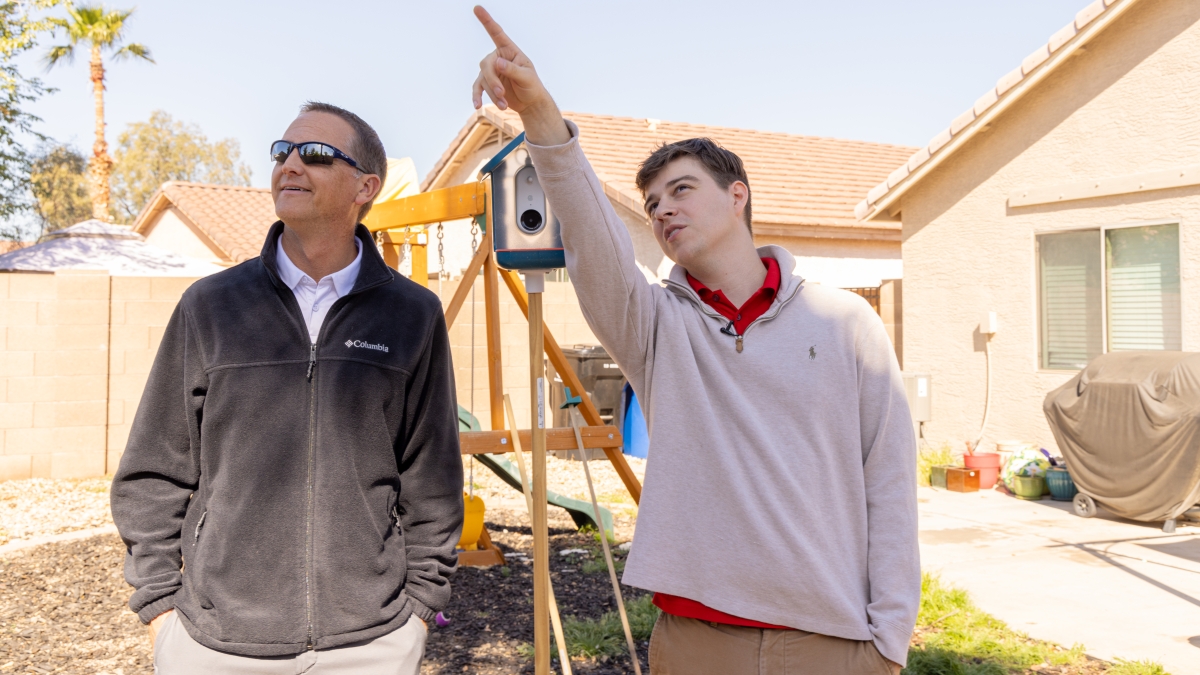
ASU Online student Carter Snee (right) and School of Life Sciences Professor Kevin McGraw examine a research set-up. Courtesy photo
ASU Online students are participating in a research opportunity that's for the birds — literally.
Online Bird Buddies is a project that allows students to observe birds remotely, using bird feeders with artificial intelligence to develop a research project on topics such as biodiversity, behavior and geography.
The project in the Online Undergraduate Research Scholars, or OURS, program is led by School of Life Sciences Professor Kevin McGraw.
Using a camera connected through an app to students' mobile devices, the feeder captures photos and videos of each animal visitor and sends a postcard that gives students information about the species’ history.
In its inaugural semester, online students in Arizona, Washington, Hawaii, Florida, Wisconsin, Virginia, New Hampshire and Costa Rica are able to observe their local bird species and activities.
Mason Mrgan, a student in Hawaii studying biological sciences with an emphasis in conservation biology and ecology, joined the research opportunity because he wanted to see what native Hawaiian birds he could attract to study their behaviors.
Early in his research, he encountered a problem with Java sparrows taking over his bird feeder.
“My plans to study habits using the time of day wasn’t working because they were eating all of the feed by 11 a.m.,” Mrgan said. “It doesn’t matter what type of feed it is; they don’t discriminate.”
After talking amongst his classmates and sharing footage of the Java sparrows, Mrgan got the idea to study the birds’ territorial aggression. He changed the times of day he put out food to see how they responded.
“They are super territorial. … They won’t let any birds come to the feeder at all,” he said. “Now I’m investigating the effects of temporarily altering their feeding environment.”
Wisconsin-based student Alex Van Hoof is also studying conservation biology and ecology and participated in the research experience.
“I hadn’t ever fed birds before, so finding out how to fight off squirrels was the first battle,” Van Hoof said. “Then I figured out the bird feeder’s software, what attracts what birds and where to position it.”
Van Hoof is using three different types of bird feed to see what birds are attracted to each option.
“I learned tools that can help me move to the next portion of my life and gain the experience necessary to do what I want to do,” he said. “Both this program and ASU have been great, so this has been a phenomenal experience.”
“This has been a fabulous program exceeding my expectations,” McGraw said.
“The OURS program has liberated students to do things that they never thought that they could in regards to conducting research in their own yards. It has connected me personally with students online, and I really have valued my online work with students for more than a decade.”
More Science and technology
Large-scale study reveals true impact of ASU VR lab on science education
Students at Arizona State University love the Dreamscape Learn virtual reality biology experiences, and the intense engagement it creates is leading to higher grades and more persistence for biology…

ASU-led space telescope is ready to fly
The Star Planet Activity Research CubeSat, or SPARCS, a small space telescope that will monitor the flares and sunspot activity of low-mass stars, has now passed its pre-shipment review by NASA.…

ASU at the heart of the state's revitalized microelectronics industry
A stronger local economy, more reliable technology, and a future where our computers and devices do the impossible: that’s the transformation ASU is driving through its microelectronics research…


